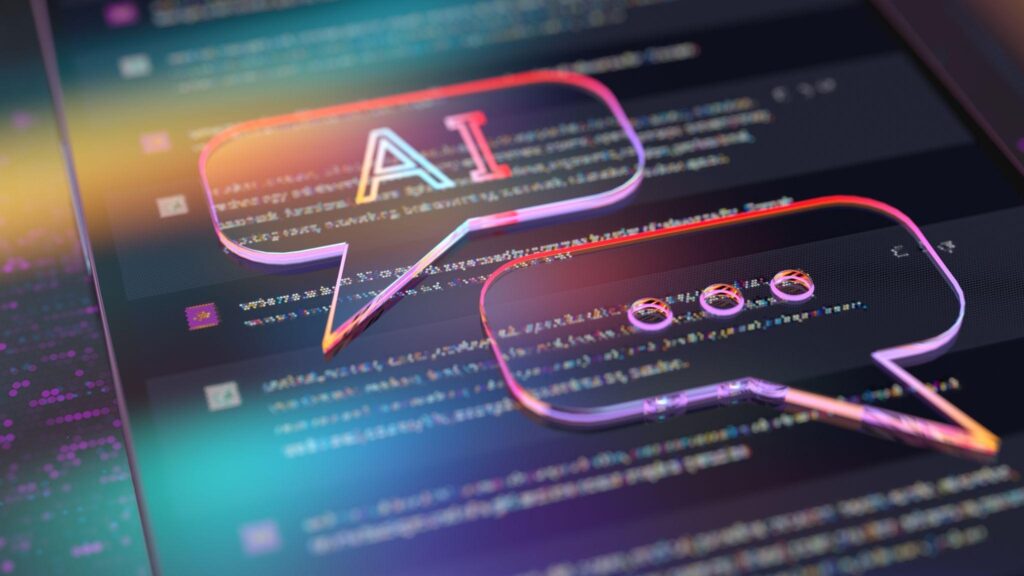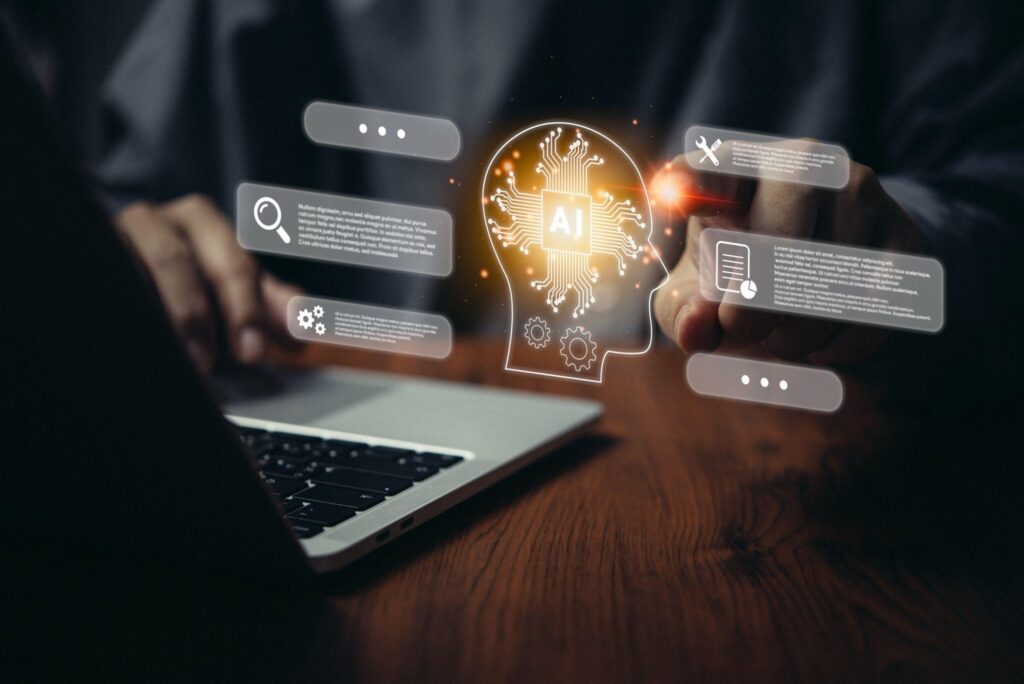Dare I call this the year of generative AI security? Everyone is talking about artificial intelligence ad nauseum, but I am sure that protecting data and infrastructure as we experiment with AI is going to be an important theme this year. We can’t hold back innovation, but we must make sure we aren’t exposing our businesses to security risks when moving at the speed that AI allows us to go.
With that background, we’ll use this blog to explore the top three cloud security priorities for 2024. While foundational cloud security practices remain essential, this year brings exciting new dimensions with the rising influence of AI. Before diving into those priorities, let’s first discuss what generative AI is and how it’s poised to transform cloud security.

What is generative AI (GenAI)?
Generative artificial intelligence (AI) is a cutting-edge field within AI that specializes in creating entirely new and unique content. It goes beyond simply simulating existing data; it can innovate and produce outputs that are often indistinguishable from human-made creations. This encompasses a wide range of formats, from images and text to music and even code.
At the heart of generative AI are advanced deep learning models like Generative Adversarial Networks (GANs) and transformers. GANs, with their unique two-pronged approach of a generator and a discriminator, embody the dynamic learning process of generative AI. Through continuous feedback and refinement, the AI progressively improves its creations until they can convincingly mimic real content. Transformers, on the other hand, revolutionize text generation by their ability to grasp context and relationships within data. This highlights the potential of generative AI for sophisticated comprehension and creative output.
The emergence of GenAI represents a major breakthrough in artificial intelligence, expanding its influence from creativity to practical applications across industries. It offers the tantalizing possibility of personalized content, realistic data for training other AI models, and valuable research datasets. Yet, this unprecedented power comes with a responsibility to address ethical concerns such as authenticity, copyright infringement, and the potential for generating deceptive content.
As GenAI evolves, it presents a unique challenge: harnessing its transformative potential for good while mitigating the risks and ethical complexities it introduces. This underscores the critical need for responsible development and use of GenAI technologies. We must ensure they contribute positively to society while implementing safeguards against potential misuse.

How generative AI works
Generative AI relies on a sophisticated learning process where algorithms analyze massive datasets to understand the intricate patterns, styles, and structures within the data. This process has two fundamental phases: training and generation.
Training phase: During training, the generative AI model is immersed in a vast amount of data. It could be text, images, music, or any other format. The goal is to allow the AI to deeply absorb the nuances of the input data, learning elements like grammar and style in text, or shapes and textures in images. This phase lays the groundwork for generating new, original content.
Generation phase: Once trained, the model uses its acquired knowledge to produce outputs that mirror the style of the training data, but with a twist – it introduces unique elements not seen before. This is where generative AI excels, moving beyond mere imitation to create genuinely original works. From realistic images to human-like text, code, or music, its creations can closely resemble those produced by humans.
(GANs) showcase the power of generative AI through a unique approach. They utilize two neural networks:
Generator: This network acts like an artist, constantly creating new data that mimics the training data.
Discriminator: This network plays the role of a tough art critic, judging the generated data and trying to identify fakes.
These networks are locked in an adversarial dance. The generator strives to produce ever-more realistic creations that can fool the discriminator. The discriminator, in turn, refines its ability to detect forgeries. This continuous competition drives improvement in both networks. Over time, the generator learns to produce highly convincing outputs, blurring the line between real and artificial data.
Impact of GANs: This dynamic process not only enhances the quality of generated content but also fosters the adaptive and self-improving nature of generative AI. This paves the way for transformative advancements in content creation across various domains.

Generative AI in cybersecurity
Generative AI is emerging as a powerful tool in the cybersecurity arsenal, offering innovative ways to protect against the constantly evolving threats in the digital world. By combining threat data with generative AI technology, security professionals can create more robust defenses, enhancing data security in ways once thought impossible.
Here’s how generative AI is transforming cybersecurity:
Realistic attack simulations: Generative AI helps cybersecurity teams prepare for attacks by creating highly realistic simulations. From phishing emails to sophisticated malware, AI-generated simulations mimic real threats, allowing teams to practice responses in a safe environment.
Digital identity and privacy: Generative AI offers a new approach to online anonymity. By creating complex and believable digital identities, it can shield users’ true identities from harm. This enhances the privacy and security of online interactions.
As cyber threats escalate, generative AI will play a vital role in safeguarding our digital lives. Beyond traditional security measures, generative AI empowers cybersecurity teams with proactive threat detection and response. It can analyze patterns to predict potential vulnerabilities and counter them before they become full-blown attacks. This not only strengthens security but also saves time and resources associated with reactive incident response.
The adaptive and ever-learning nature of generative AI makes it uniquely suited to meet the challenges of constantly evolving threats. By staying ahead of attackers, generative AI offers a sophisticated defense against cybersecurity risks, promising a more secure and resilient digital future.
Pros and cons of generative AI in cybersecurity
| Aspect | Pros | Cons |
| Efficiency | Speeds up threat analysis and protocol creation | Over-reliance may cause missed novel or complex threats |
| In-depth analysis | Handles vast data for detailed insights, aiding decision-making | May overlook critical nuances, potentially missing subtle threats |
| Proactive threat detection | Predicts and detects threats early by analyzing data trends | Predictive models might not recognize new, unseen threats, leaving vulnerabilities |
Efficiency
Pros:
Accelerated threat analysis: Generative AI can dramatically speed up the analysis of cyber threats, allowing security teams to react swiftly.
Automated security protocols: AI can streamline protocol development, taking basic suggestions or templates and transforming them into fully implemented security measures. This significantly reduces reaction time and resource strain on security teams.
Cons:
Vulnerability to unknown threats: Overreliance on generative AI for efficiency can create blind spots. AI systems may struggle to recognize new or complex cyber threats that differ from their training data.
Key takeaway: It’s important to balance the efficiency gains of generative AI with a critical understanding of its limitations to ensure comprehensive threat detection and response.
In-depth analysis and summarization
Pros:
Digesting massive data: Generative AI can process vast amounts of data to produce analyses and summaries that would overwhelm human analysts, offering valuable insights for timely decision-making.
Cons:
Missing nuances: AI-generated summaries risk obscuring critical details or oversimplifying information, potentially leading to inaccurate interpretations of cyber threats.
Key takeaway: While generative AI can aid in analyzing complex data, it’s crucial to maintain human oversight to ensure essential context and subtleties are not lost.
Proactive threat detection
Pros:
Predicting emerging threats: Generative AI can analyze trends and patterns to anticipate potential threats, allowing cybersecurity teams to shift from reactive to proactive defense.
Cons:
Vulnerability to the unknown: Predictive models may struggle with truly novel, unseen threats that don’t fit established patterns. This emphasizes the need for ongoing updates and adaptation in AI-driven security.
Key takeaway: While generative AI offers a significant advantage in proactive threat detection, it’s essential to remember its limitations and the constant evolution of cyber threats.

Security risks associated with using generative AI in enterprise environments
The immense potential of generative AI for innovation and productivity within enterprises comes with a significant caveat: it introduces new dimensions of security risk requiring proactive and comprehensive mitigation. These risks stem from potential vulnerabilities in the AI systems themselves, which could lead to sensitive data exposure and sophisticated cyberattacks. Let’s delve into these concerns, explore the potential threats, and discuss strategies to mitigate these risks.
1. Employee exposure of sensitive work information
Risk overview: Generative AI tools, especially large language models, can absorb and reproduce sensitive information patterns from their training data. This creates a risk of confidential data leaking out if these systems are mismanaged or accidentally generate content that reveals sensitive details.
Mitigation strategies:
- Anonymize data: Implement strict protocols to remove personally identifiable information and other sensitive details before AI systems process data.
- Control access: Enforce rigorous access controls and usage policies for generative AI tools to limit the potential for unauthorized exposure of confidential information.
- Audit outputs: Regularly monitor AI-generated content to detect and address any instances where compromised data might be present. Ensure ongoing sanitization of training data.
2. Security vulnerabilities in AI tools
Risk overview: AI systems, especially those connected to networks or the web, can become prime targets for sophisticated attacks. Malicious code injected into AI models can disrupt their operation, leading to unauthorized access or the generation of harmful outputs.
Mitigation strategies:
- Robust vulnerability assessment: Conduct regular vulnerability assessments to identify potential weaknesses and implement necessary fixes proactively.
- Strong data encryption: Protect data both at rest and in transit using industry-standard encryption techniques to safeguard it from unauthorized exposure.
- Secure development practices: Integrate secure coding principles into AI development to minimize potential vulnerabilities from the outset.
- Active collaboration: Maintain close collaboration with AI security communities and vendors to stay up to date on the latest threats and solutions.
3. Data poisoning and theft
Risk overview: Data poisoning attacks involve the subtle manipulation of training data to corrupt AI models. Adversaries can use this to produce misleading results, sabotage threat detection, or even generate false but seemingly legitimate sensitive data.
Mitigation strategies:
- Protect training data: Meticulously safeguard the integrity of training data sources to prevent tampering.
- Anomaly detection: Implement tools designed to identify unexpected behavior in both AI outputs and training data inputs, providing early warnings of potential attacks.
- Robust backups: Regularly back up systems and maintain a reliable recovery plan to rapidly restore functionality in case of data corruption.
4. Breaching compliance obligations
Risk overview: Generative AI’s handling of personal or sensitive data can lead to significant compliance issues, particularly with stringent regulations like the General Data Protection Regulation (GDPR). AI-generated outputs could inadvertently violate data protection or privacy standards, resulting in potential legal and financial consequences.
Mitigation strategies:
- Compliance-driven design: Build generative AI systems with compliance as a core principle. Embed privacy by design throughout the entire development and deployment process.
- Evolving with regulations: Establish a process for regularly reviewing and adapting data processes and AI outputs in response to changing legal and regulatory landscapes.
- Proactive risk assessment: Conduct thorough impact assessments of AI deployments to preemptively identify potential privacy and security risks, developing targeted solutions to address them.
The top 3 cloud security priorities for 2024
Now that we’ve explored the potential of generative AI and its implications for cybersecurity, let’s dive into the top 3 cloud security priorities for 2024.
1. The rise in cyberattacks overall

In 2023, I saw more attacks on our customers than ever before. There has been an increase in cyberattacks in general, which is why we at SADA are continuing to develop our Cloud Security Confidence program and adding things like red teaming to the services portfolio to help ensure that we have a complete view of current security postures. Protecting sensitive data from cyber threats and improving your organization’s security posture are never going to go out of style.
I’m not sure if the rise in cyberattacks is because we’re getting better at detecting bad actors through practices like identity and access management, or because there are simply more attacks taking place.
Nevertheless, the increase in nation-state actors is cause for concern, especially coming into an election year. These actors are well-funded and highly motivated, and can cause significant damage, exploiting security vulnerabilities that expose digital assets. We helped a number of our customers this year as they cleaned up after newsworthy attacks, making sure to leave their cloud architecture in better condition.
2. Protecting data and infrastructure as we experiment with AI

AI is a powerful tool, but like any new technology, it can be dangerous if it’s not used properly. We need to make sure that we’re protecting our data and infrastructure not just from malicious actors, but from accidental threats, too.
Even as I write this, there is still much we don’t know about how this will all scale and operate. Every day, I hear about new versions of LLMs, personal GPTs, and innovations from Google, Microsoft, AWS, Apple, and others. Like SaaS apps, AI is going to change the way our users interact with cloud applications, vast amounts of data, and each other.
If you have already started looking at policies and data segregation, you need to put that on your list for 2024. Along with policies, we will need to have options for our users that protect the data they interact with. This is crucial to prevent unintended data leaks caused by well-intentioned employees.
Potential threats linger when security requirements aren’t quick in responding to today’s evolving threat landscape. It will be exciting to see how paid options from Google and others develop throughout the year.
3. Maintaining the acceleration of AI, safely

We can’t hold back innovation. Security is all too often the department of “no,” but those days are long behind us. Adopting protection strategies ahead of AI usage will be key to ensuring that we drive and enable innovation.
We need to embrace AI and use it to our advantage to protect data, as well. Supply chain attacks, data breaches, and other evolving threats require business leaders to identify patterns and deploy security analysts who are armed with a new generation of security tools to spot attack paths while automating responses. Threat actors aren’t sitting this year out. Neither can we.
To elevate our threat intelligence, we need to add data management tools that allow us to ensure proper protections and separation, and work with data teams to ensure that we have a solid strategy for data democratization. Built-in security tooling and monitoring will be key to ensuring that AI is adopted and used without risking exposure to private or confidential information, either internally or externally.
Adopting protection strategies ahead of AI usage will be key to ensuring that we drive and enable innovation. We need to embrace AI and use it to our advantage to protect data, as well.
Rocky Giglio, SADA Director, Security GTM and Solutions
The top security concerns for 2024 from around the web

Maintaining SADA’s cloud security team’s expertise means staying on top of how other organizations are talking about evolving attack vectors and the latest security protocols. I make it a habit to check in with how other top security organizations are taking the pulse of the cloud security landscape.
Here are the top cybersecurity trends for 2024 according to the respected cyber security experts at Gartner, Google, and Mandiant:
- “Fifty percent of chief information security officers (CISOs) will adopt human centric design to reduce cybersecurity operational friction.”
- “Modern privacy regulation will blanket the majority of consumer data.”
- “By 2026, 10% of large enterprises will have a comprehensive, mature and measurable zero-trust program in place, up from less than 1% today.”
- “By 2025, 50% of cybersecurity leaders will have tried, unsuccessfully, to use cyber risk quantification to drive enterprise decision making.”
- Attackers will incorporate AI into their operations and defenders will use it to strengthen detection and response.
- Nation-states will continue to conduct cyber operations to achieve their geopolitical goals.
- Attackers will continue to exploit zero-day vulnerabilities and use other techniques to evade detection.
- There will be a rise in hacktivism and other cyber activity related to major global conflicts, elections, and the Summer Olympics.
- AI will be used to scale phishing, information operations and other campaigns, but also for improved detection, response, and attribution of adversaries at scale, and faster analysis and reverse engineering.
- China, Russia, North Korea, and Iran will conduct everything from espionage to cyber crime to achieve their respective goals.
- Adversaries will use zero-days to evade detection and maintain access for longer, and increasingly target edge devices and virtualization software, which are particularly challenging to monitor.
- Threat actors will seek to exploit misconfigurations and identity issues to move laterally across different cloud environments.
- We will see more disruptive hacktivism related to global conflicts, and targeting of the Summer Olympics in Paris, as well as various elections.
- Malware authors will develop more software in programming languages such as Go, Rust, and Swift, which makes reverse engineering more difficult.
Confronting the next wave of cyberattacks, with support from SADA

Staying ahead of evolving cyberattacks and maintaining vigilance around your data and teams starts with thorough attention to your cloud environments. Your security posture is going to reflect your unique business model, industry, and regulatory landscape.
Whether your security teams are responsible for hybrid cloud environments, are all-in on the public cloud, or are just migrating from an onpremises environment, the cybersecurity measures and security controls you implement should reflect a sober understanding of today’s security threats.
That’s where SADA’s Cloud Security Confidence Assessment comes in.
Your dedicated SADA security team will perform a comprehensive investigation into your access protocols and defenses, generating a Cloud Security Confidence Score that you can use as your base level as you elevate your security profile. This deep dive will touch upon such areas as zero trust security, AI systems, hosted services, incident response protocols, and all manner of data protection.
You’ll get custom recommendations on how to strengthen your systems, including guidance on adopting the best third-party solutions and how to meet your industry’s regulatory requirements. Your custom assessment will give you a better understanding of your cloud infrastructure, a firmer grasp on emerging threats, and increased understanding of the new era of AI in cybersecurity. Your dedicated SADA team will provide detailed guidance on cloud resources that reduce the complexity of what can often be extremely difficult cybersecurity deployments.
Contact us today to get started with your custom assessment, and become even more confident in your organization’s readiness for what lies ahead.





